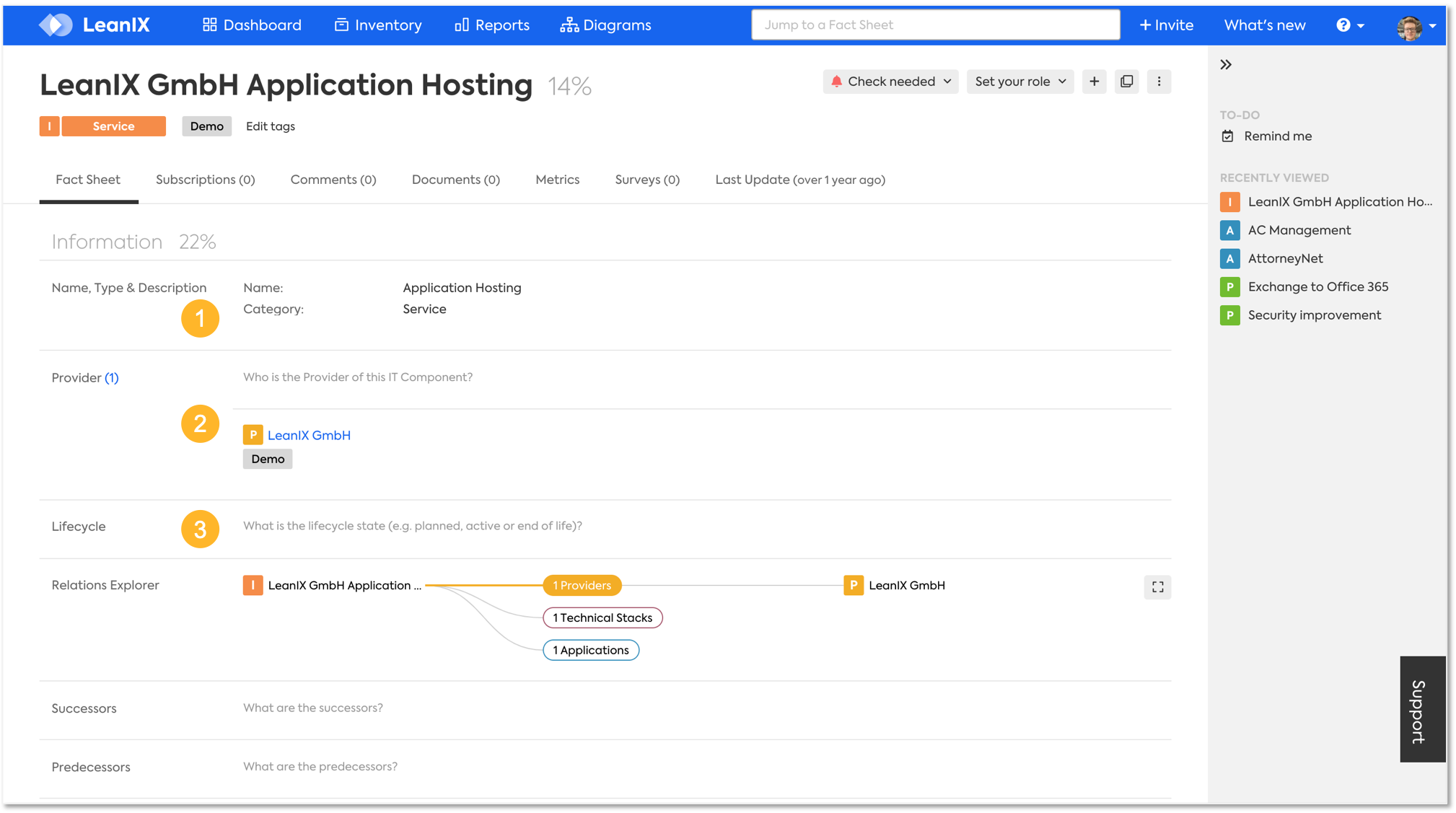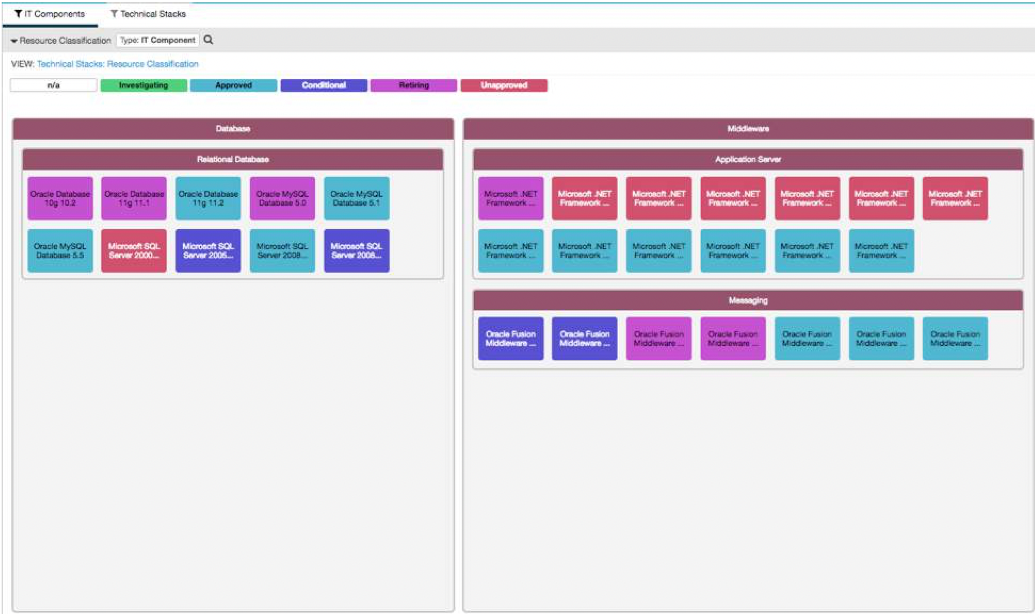Standards Management
Keep standardization policies intact with LeanIX while using bold, agile methodologies.
The use of standardized information technology in large corporations has measurable benefits: reduced training time and costs; lower support and maintenance costs; better bargaining power with a smaller number of vendors; and enhanced communication.
Standardization also often goes hand-in-hand with centralization — the process of giving your IT department more control over purchases of hardware and software, as any piece of software equipment added to an IT system requires maintenance, staff training, repairs, patches, upgrades, etc.
Achieving this balance requires a standardization policy tailored to an operation’s individual needs.
LeanIX can facilitate Standards Management with these six steps:
1. Establish a Tech Category model based on proven best-practices
List fundamental IT according to core processes, people, and domains to establish a baseline to view proposed innovations. Always feel free to adapt with additional categories of technology but make sure mapping remains high-level. Question why these technologies have an exceptional usage.
Download the LeanIX poster on Best Practices to Define Tech Category
This poster leverages visual Tech Category examples to enable you to create the perfect Tech Category for your organization and is available here.
2. Establish definitions of IT Components to match best practices of your business environment
Tailor-made IT standards require simplified communications and instructions. Ensure the following:
Clear Naming: The IT Component List needs to be understandable for all people.
Right Abstraction: Avoid academic deliberations — only model data that is necessary for achieving strategies and helping base decisions.
Keep it simple: Use hierarchies only when needed. Save details; save time.
Automate, if possible: Use Lifecycle Catalog, or integrate to your CMDB to capture data.
3. Begin with the most important attributes
The most important attributes of applications must be detailed in Fact Sheets before all else:
IT Component Name & Description
Provider Information (e.g., hosting information)
Lifecycle Information
Tech Category and Resource Classification (i.e., the attribute from the IT Component to the Tech Category that shows whether an IT Component is an acceptable standard)


4. Validate all information via Fact Sheet subscribers
Send LeanIX Surveys at regular dates to qualify information in the system. As well, standardize frequent completeness checks and set alarms if review dates are missed.

5. Share results and get stakeholder feedback
Use the IT Component Landscape Report to provide status updates of all Resource Classifications (“Investigating”; “Approved”; “Conditional”; “Retiring”; “Unapproved”) across Tech Category. Do this early into your standards management process and establish a process of timely feedback sessions in order to continually improve.

6. Field stakeholder questions to develop agreed upon IT standards
Cementing standards requires final consultation with assorted stakeholders throughout an operation. Whether from an IT and Business-focus, Operational or Strategic-level, standardization must be consistently aligned and tweaked while keeping pace with the changing business realities of diverse organizational heads.
See also our blog post on Standards Governance with LeanIX
Read more on the LeanIX radical agility approach and standardization approach here.
Updated over 1 year ago
